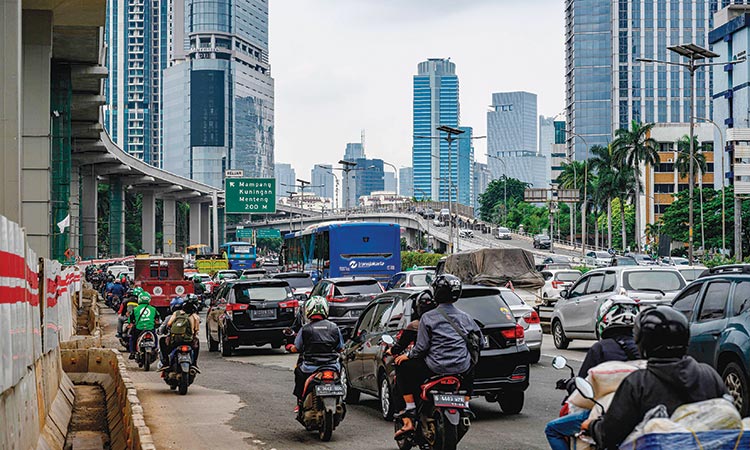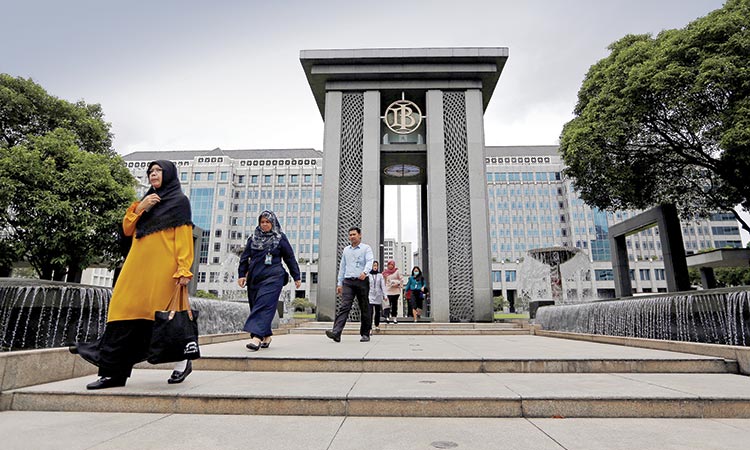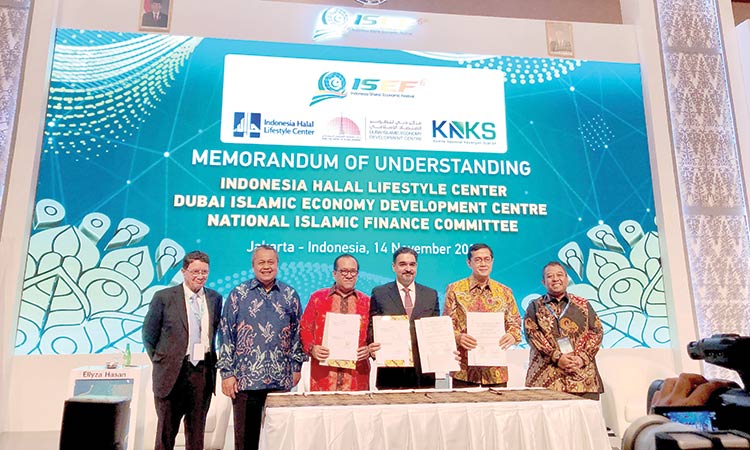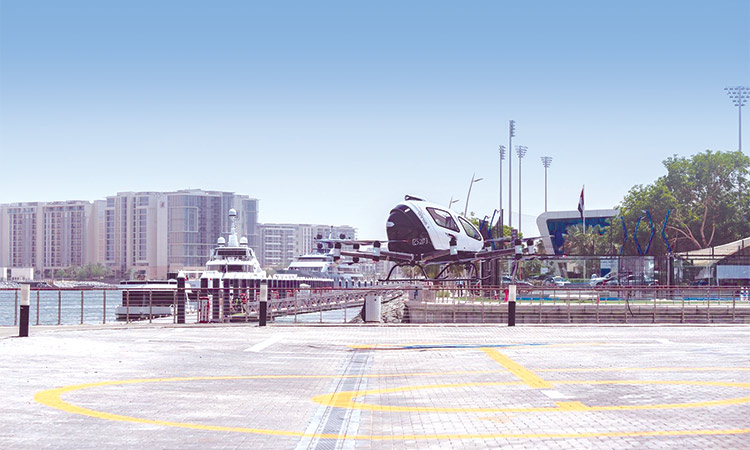Indonesia’s GDP growth stagnated at 5.02% last year

Commuters make their way to downtown Jakarta, Indonesia, on Wednesday. Agence France-Presse
Last year’s gross domestic product (GDP) growth was the weakest since 2015, slowing from 5.17 per cent in 2018. This also means the government failed to achieve the targeted growth of 5.3 per cent stated in the 2019 state budget.
Indonesia’s economic growth slowed to its weakest pace in three years in the final quarter of 2019 as investment, spending and exports weakened despite government efforts to bolster Southeast Asia’s largest economy from a slowdown in global demand.
Economists expect the central bank to further cut rates to shield the economy from the impact of the coronavirus outbreak in China, the country’s biggest trading partner and a major source of direct investment.
Indonesia’s economy expanded 4.97 per cent on an annual basis in the October-December quarter, data from the statistics bureau showed on Wednesday, slower than expected in a Reuters poll.
For 2019, the economy grew 5.02 per cent, close to the poll’s forecast but short of the government’s 5.3 per cent target.
Slowing global trade amid the US-China tariff dispute had hurt Indonesia’s important commodity exports, while national elections delayed investment decisions.
Household consumption, which accounts for more than half of Indonesia’s GDP also slowed, with sales of clothes, mobile phones, cars and motorbikes contracting, according to the statistics bureau.
Fakhrul Fulvian, economist at brokerage Trimegah Sekuritas, said slowing investment could signal a further downturn ahead.
“This makes for even more urgency for BI (Bank Indonesia) to cut rates further as soon as possible,” Fulvian said, predicting growth would not rebound before the second half.
Last year, BI cut its policy rate four times by a total of 100 basis points and eased lending rules to support growth.
Trinh Nguyen, Hong Kong-based senior economist with Natixis, said she expected a total of 50 bp-cuts this year.
Ahead of the data, BI Governor Perry Warjiyo said at a seminar the central bank will use all tools to further support growth this year.
The governor forecast a GDP growth rate of 5.3 per cent in 2020, in line with the government’s target.
The rupiah barely moved, trading at 13,715 per dollar before the midday break.
President Joko Widodo, who began a second term in office in October, has made lifting GDP growth and creating more jobs in the world’s fourth most populous country a priority.
He plans to hand companies tax cuts and relax rigid labour rules, through the so-called “omnibus” bills, aimed at speeding up the process of revising many, unrelated regulations at once.
Josua Pardede, an economist at Bank Permata, warned the economy may remain under pressure in the first half, though the omnibus bills, if passed, could start to influence investment decisions in the second half.
“Investment growth would still be low given that global uncertainty continues and also with the coronavirus putting pressure on the Chinese economy,” Pardede said, giving a 2020 growth forecast of 5.0 per cent-5.1 per cent.
Authorities have expressed confidence that travel curbs and capital outflows stemming from the virus outbreak that has killed nearly 500 people and infected more than 24,000 others, mostly in China, will not seriously dent Indonesia’s economy.
Chinese tourists represent some 13 per cent of total visitors to Indonesia and the country is also the biggest buyer of Indonesian goods, with any deceleration in China’s growth likely to affect commodity prices.
“Under conditions like this, I’m sure the economy can still grow 5.1 per cent because the government will look to boost domestic sources of growth, while BI can still cut rates,” said Winang Budoyo, economist at Bank Tabungan Negara.
Meanwhile the world’s top palm oil producer Indonesia exported a record 36.18 million tonnes of palm oil and its products, including biodiesel last year, data from the Indonesia Palm Oil Association (GAPKI) showed on Monday.
Exports rose by 4.2 per cent from 34.71 million tonnes in 2018, supported by rising demand from China, the Middle East and African markets, which offset declines in demand from other countries notably India, chairman Joko Supriyono said.
He said India, the world’s top vegetable oil buyer, recorded the biggest decline among shipment destinations last year following higher import tariffs on Indonesian shipments compared to those from rival Malaysia.
Supriyono said production growth in 2020 is expected to slow as drought and a cut in fertiliser usage last year will likely affect yield.
He also said GAPKI was monitoring the impact of the spread of coronavirus in China on palm oil demand.
GAPKI said Indonesia produced 47.1 million tonnes of crude palm oil (CPO) last year and 4.6 million tonnes of palm kernel oil. By comparison, in 2018 the country produced 43 million tonnes of CPO and 4.3 million tonnes of kernel oil.
By the end of 2019, Indonesia held about 4.6 million tonnes of palm oil stockpiles.
Prices have fallen across commodity markets because of concerns the fast-spreading coronavirus will affect economic activity in China and in turn demand for imports.
Reuters







